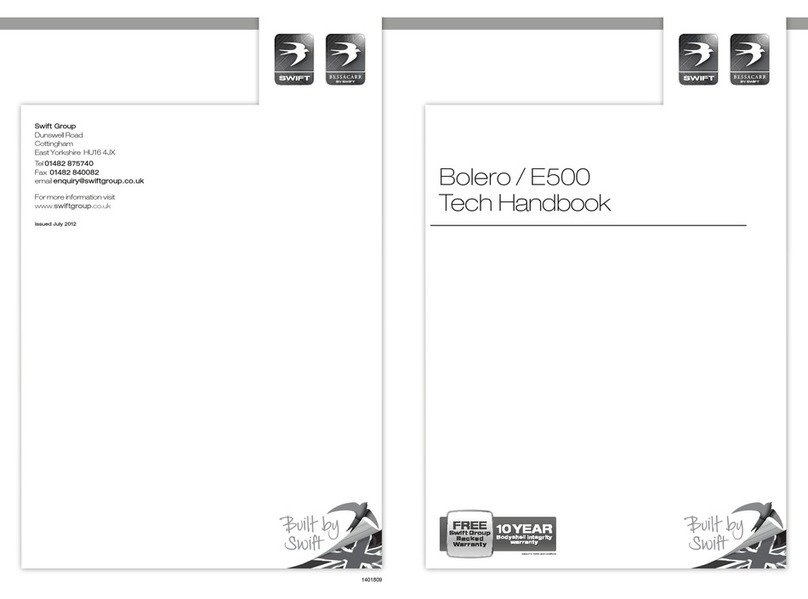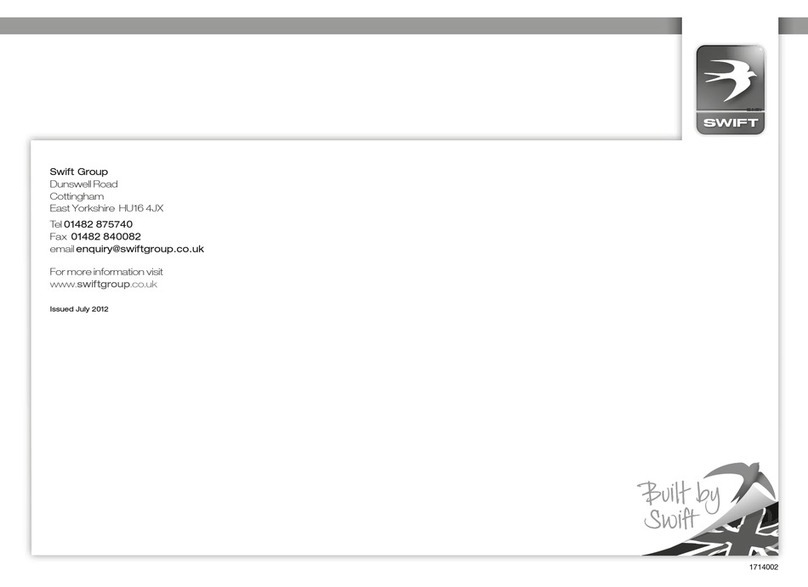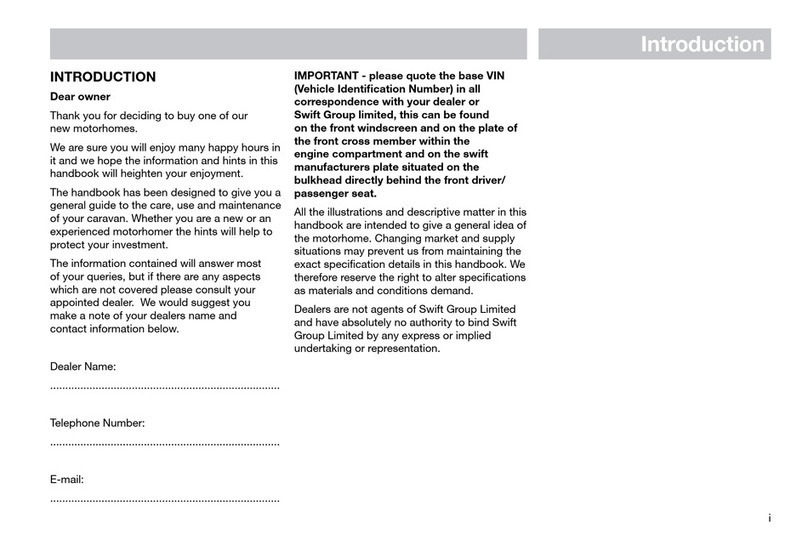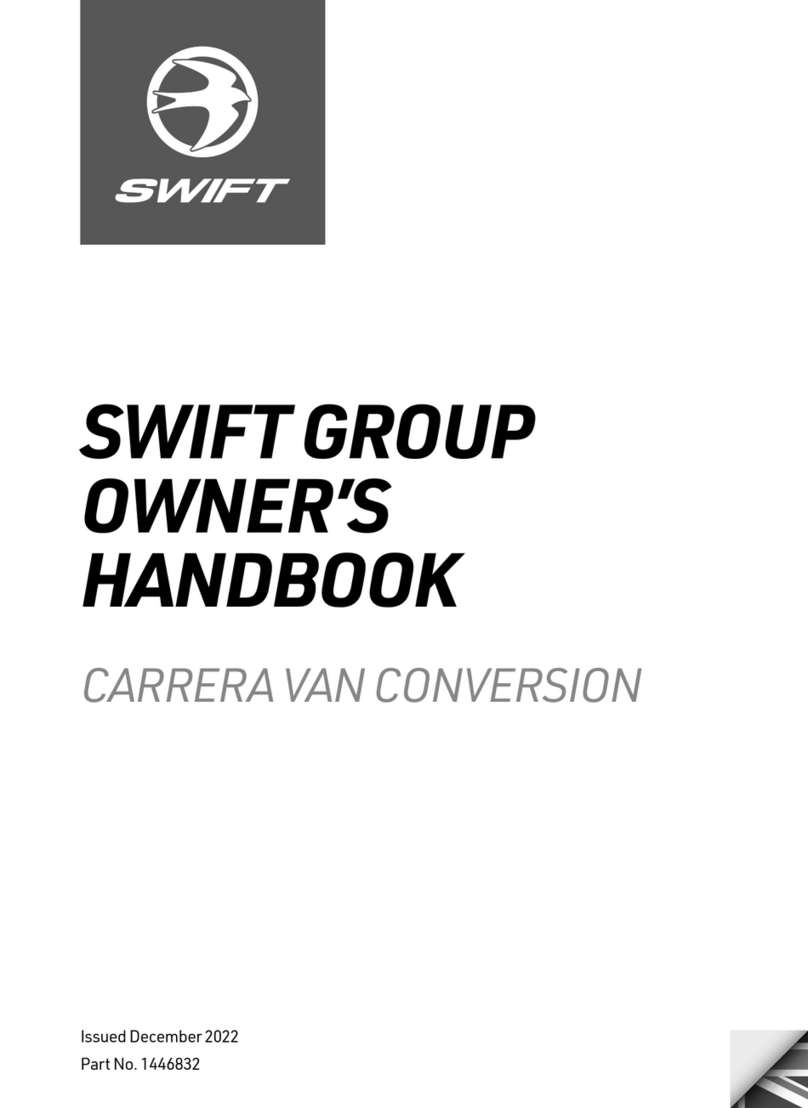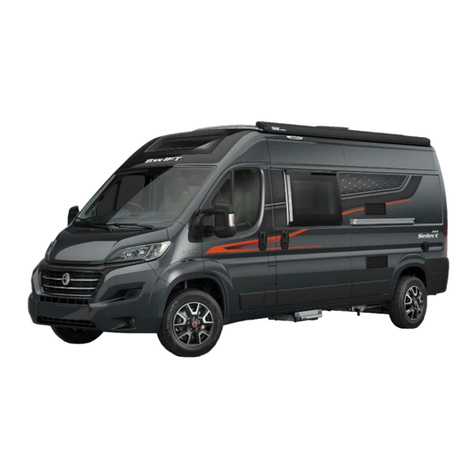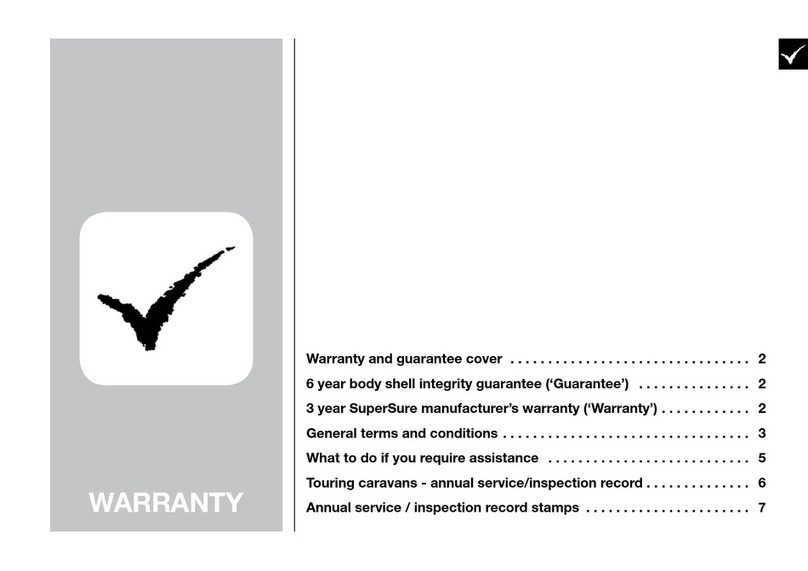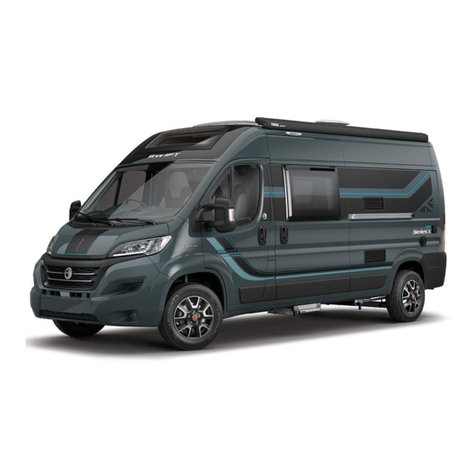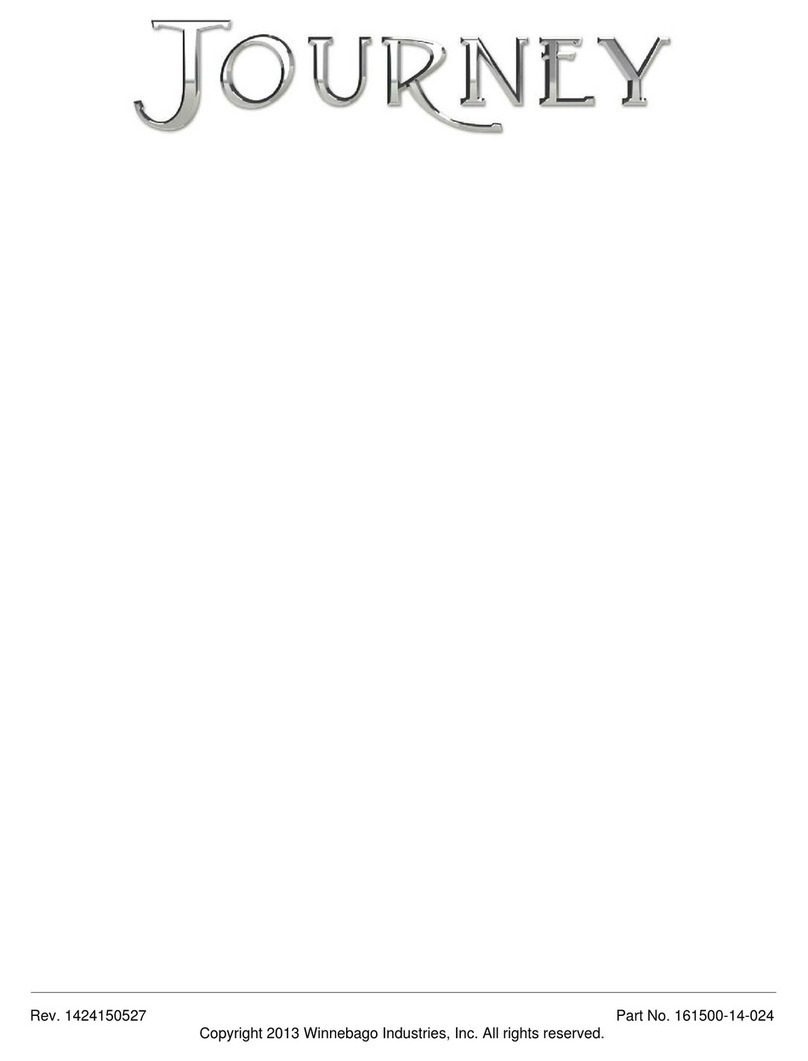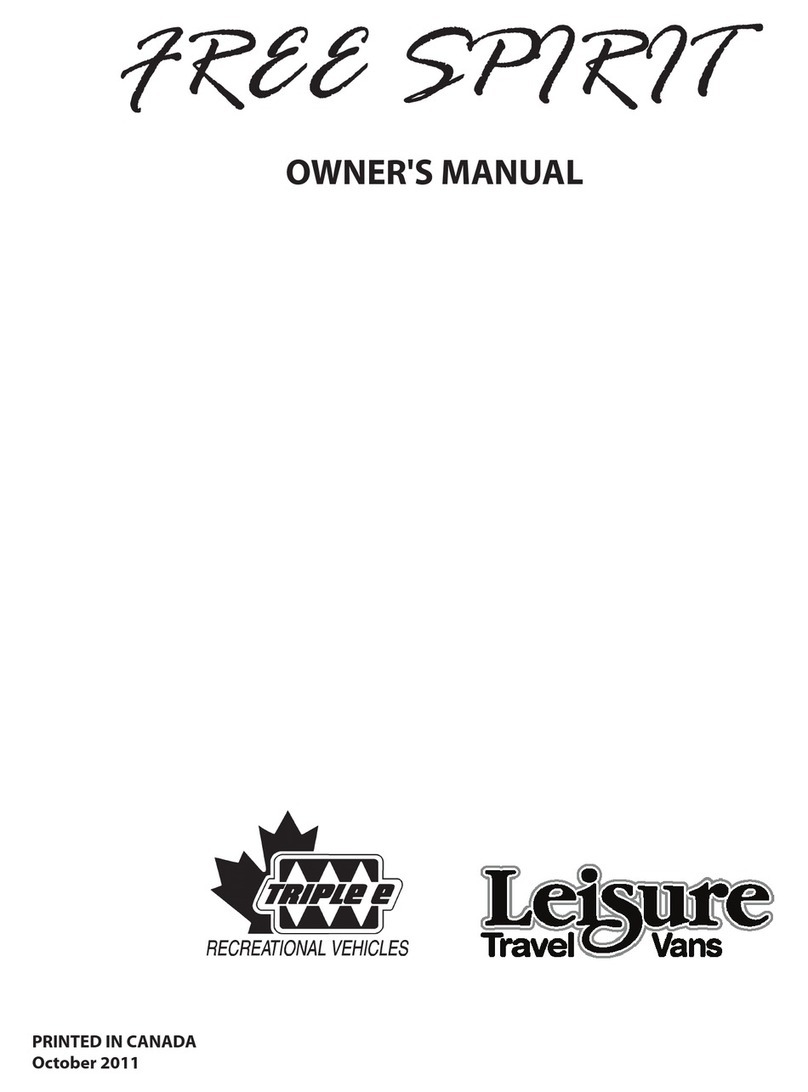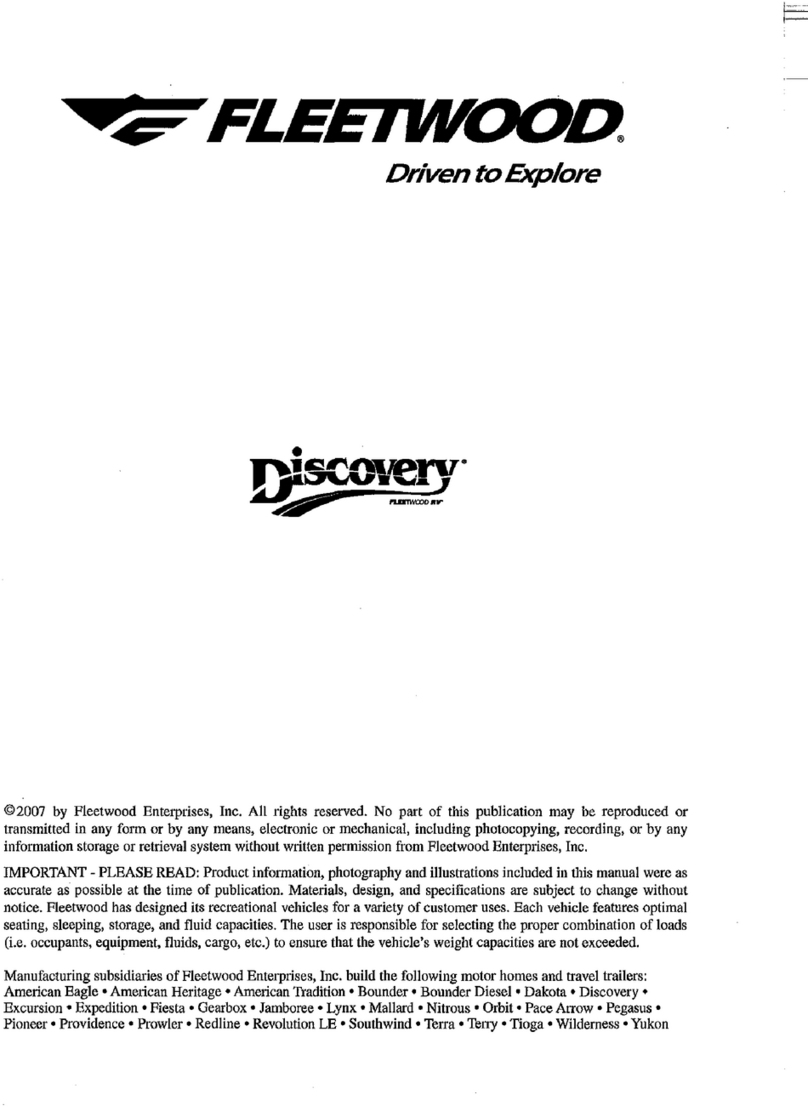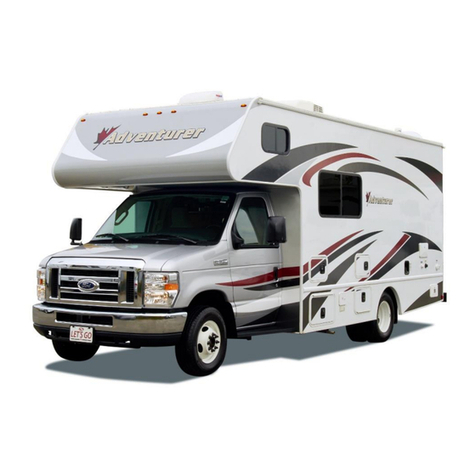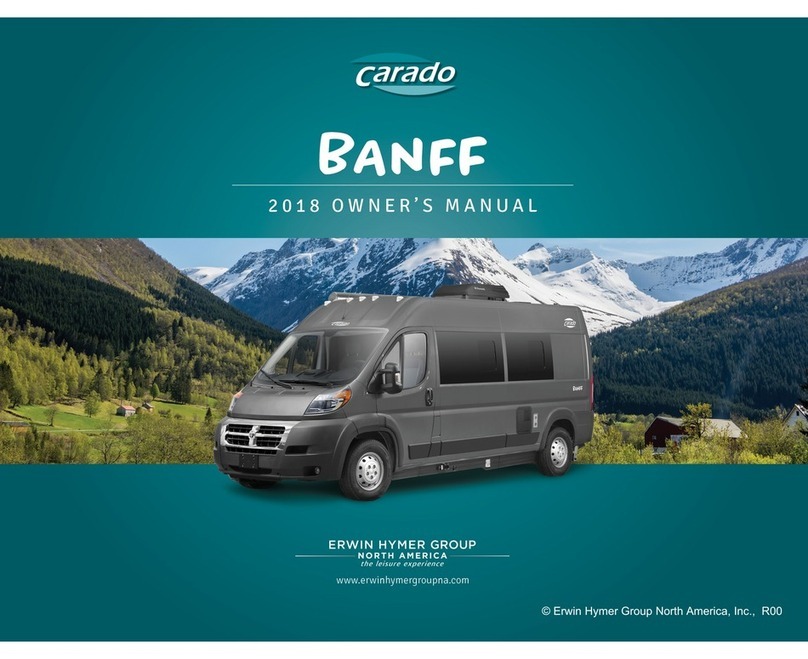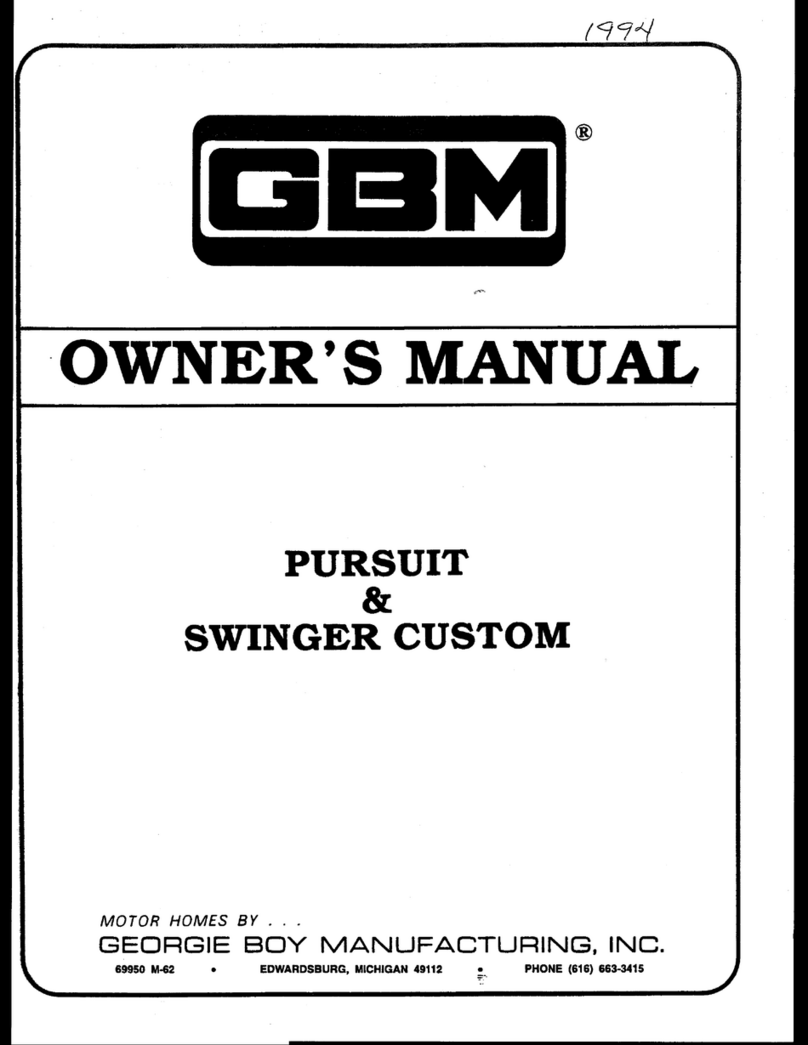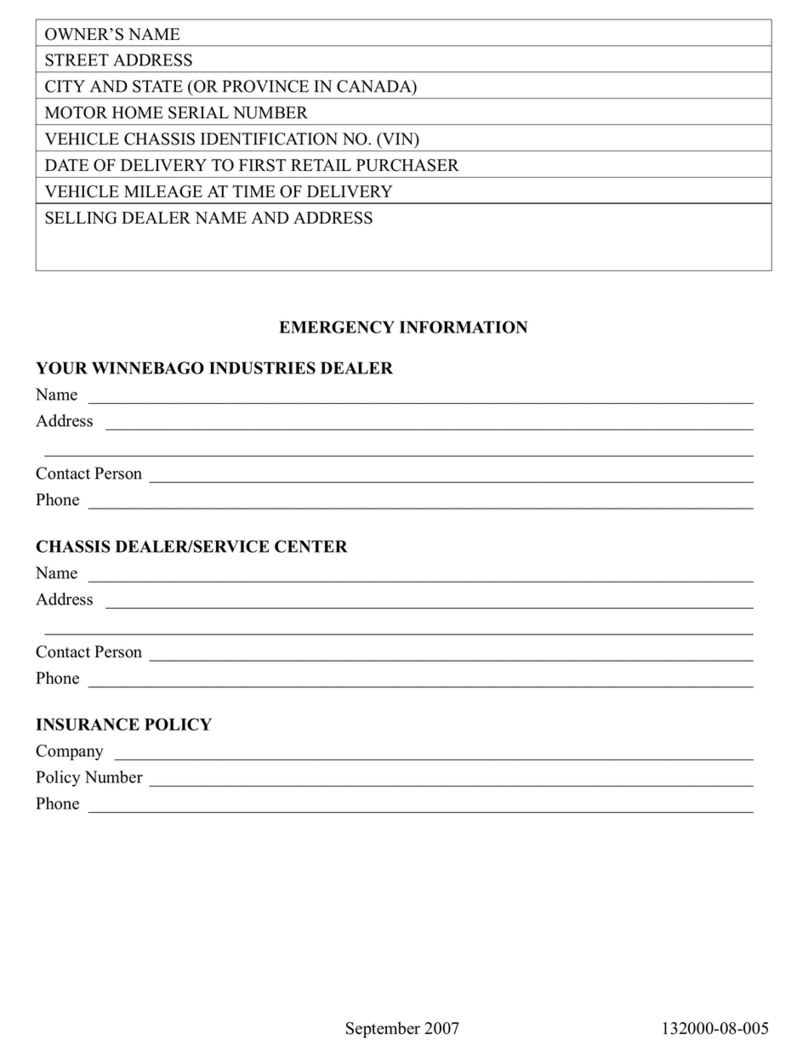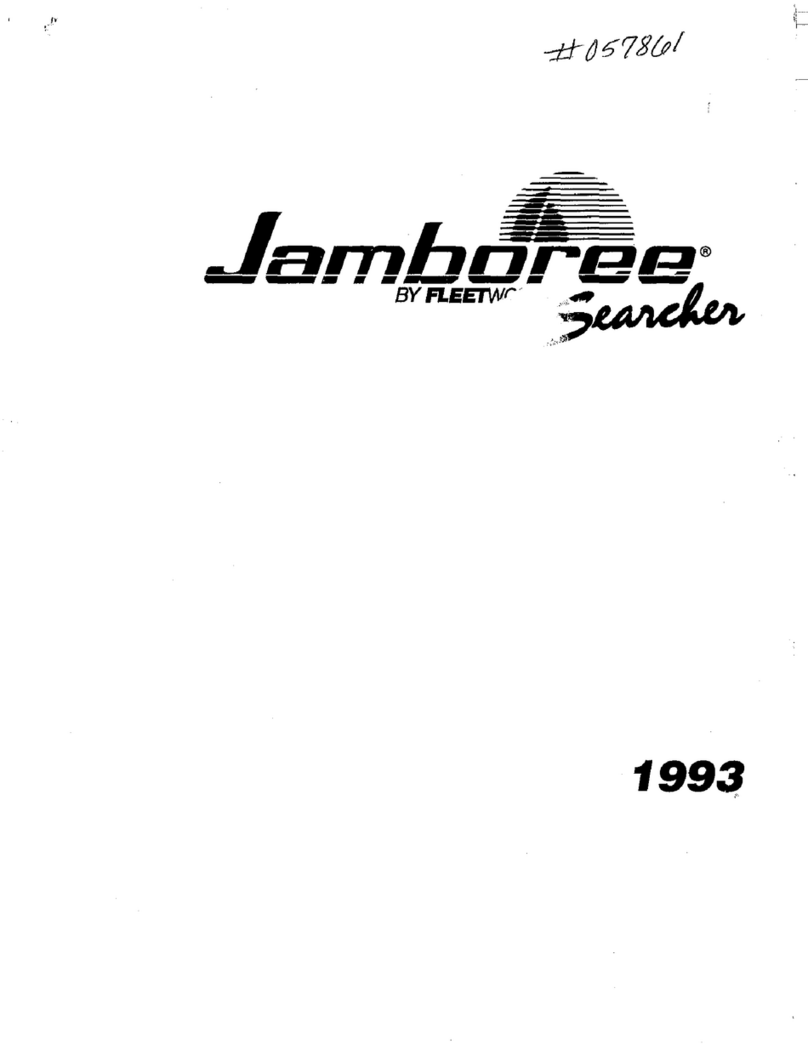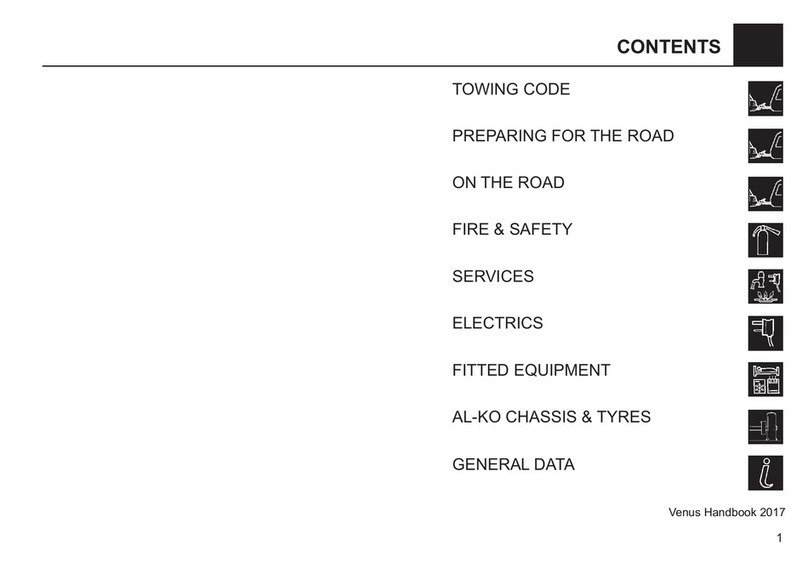2
All the illustrations and descriptive matter in
this handbook are intended to give a
general idea of the caravan. Changing
market and supply situations and our policy
of continuous product development may
prevent us from maintaining the exact
specifications detailed in this handbook.
We therefore reserve the right to alter
specifications as materials and conditions
demand.
Dealers are not agents of Swift Group
Limited, the manufacturer of Swift Group
caravans, and have absolutely no authority
to bind the manufacturer by any express or
implied undertaking or representation.
WARRANTY AND GUARANTEE COVER
All Swift Group caravans have a 6 year
body shell integrity guarantee and a 3 year
SuperSure manufacturer's warranty from
the date of purchase (or hire purchase),
which are subject to a chargeable annual
service, inspection and moisture survey
(“Annual Service”) being carried out at an
authorised Swift Group Service Centre.
Original VAT invoices must be retained as
proof of Annual Services being carried out.
In the unusual event that a fault develops
and you need to claim under this Warranty
and Guarantee, your first contact should
normally be made through the dealer from
whom the caravan was purchased.
In certain circumstances, arrangements can
be made to have the claim dealt with by a
different authorised Swift Group Service
Centre – see final paragraph below for
details. It is the responsibility of the
Purchaser to deliver the caravan to and
collect the caravan from the Service Centre
for all warranty work.
During the warranty period, subject to the
exclusions set out in this section of the
handbook and provided the warranty claim
is authorised by the manufacturer, Swift
Group Limited, the authorised Swift Group
Service Centre will repair (or at the option of
the manufacturer, replace) all defective
parts of the caravan at the expense of the
manufacturer. Swift Group Ltd reserves the
right to examine the caravan prior to
commencement of repairs or replacement
of parts.
6 YEAR BODY SHELL INTEGRITY
GUARANTEE (“GUARANTEE”)
The Guarantee extends to the
following items:-
Body leaks and delamination: water ingress
through any permanently sealed seam
joints or delamination of panels and floor,
being part of the original manufacturer’s
construction.
The manufacturer will honour the Guarantee
for 72 months from the date of purchase,
provided that the caravan has had an Annual
Service, within 90 days before or 60 days after
each anniversary of the original date of
purchase (or hire purchase). The sixth Annual
Service must, however, be carried out before
the expiry of the 72 month period from the
original date of purchase (or hire purchase).
Specific exclusions from the Guarantee:-
Seams and panels requiring repair must be
part of the original construction of the caravan
and must not have been tampered with or
repaired otherwise than by Swift Group Ltd or
an authorised Swift Group Service Centre.
Also see general terms and conditions.
3 YEAR SUPERSURE MANUFACTURER'S
WARRANTY (“WARRANTY”)
The manufacturer will honour the Warranty for
36 months from the date of purchase (or hire
purchase), provided that the caravan had an
Annual Service within 90 days before or 60
days after each anniversary of the original date
of purchase (or hire purchase).
The third Annual Service must, however, be
carried out before the expiry of the 36 month
period from the original date of purchase
(or hire purchase).
Warranty
